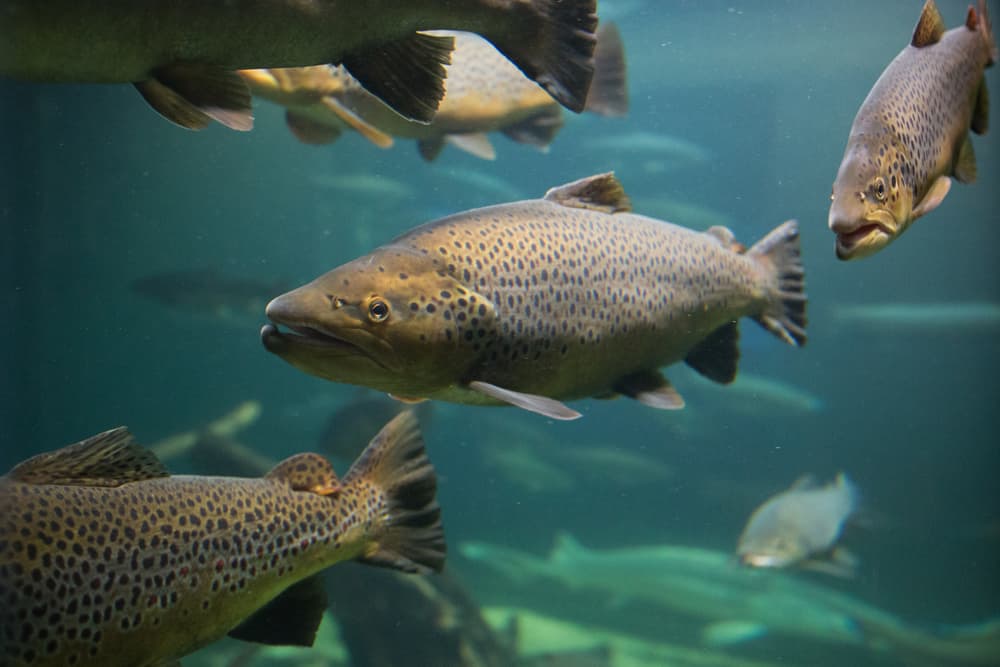The question of what do salmon eat is quite curious even though these fish are near-impossible to keep as indoor pet fish. Whether you insist on trying, however, or you’re just curious, let’s take a look at the feeding habits of the different types of salmon as well as on their life cycle in general.
Are salmon carnivores?
Not really – salmon are technically omnivores. This means that they can feed on predation as any carnivore in the ocean but they can also eat zooplankton, krill, and many other things floating in the rivers or the ocean. This puts them in the middle of most food chains they are a part of as they themselves are prey to true carnivore predators such as dolphins, whales, seals, and others.
The Eating Habits of Salmon
What a salmon eats, when, and how, depends on its environment and on what stage of its life the salmon is at the time. In general, a salmon’s menu can include anything such as Lanternfish, Capelin, Sand Lance, and other types of small fish, multiple near-water types of insects such as mayflies and stoneflies, shrimp, eel, amphipods, crustaceans, squid, krill, zooplankton, and lots of other things.
The eating habits of salmon generally move through three stages:
- Juvenile salmon will eat mostly zooplankton as well as caddisflies, mayflies, worms, and stoneflies, as well as the occasional acquatic invertebrates – basically whatever they can until they get to salt water from their freshwater places of origin.
- As adults, salmon will eat any type of small fish, eel, shrimp, amphipod, crustacean, or other things they meet out in the ocean that are small enough for them to safely catch and consume.
- In their later stage of life, when they return to the freshwater springs from which they hatched, salmon are said to stop eating. We will touch on that in a bit more detail later in this article, however, as that may not be entirely true.
What do the different types of salmon eat?
We covered exactly what salmon eat and what their eating habits are above, but now let’s find exactly what the different types of wild salmon eat. This is largely dependent on their environment and habitat, as well as their differing size. So, while all six of the main types of salmon below are omnivores, there are differences.
1. Atlantic salmon
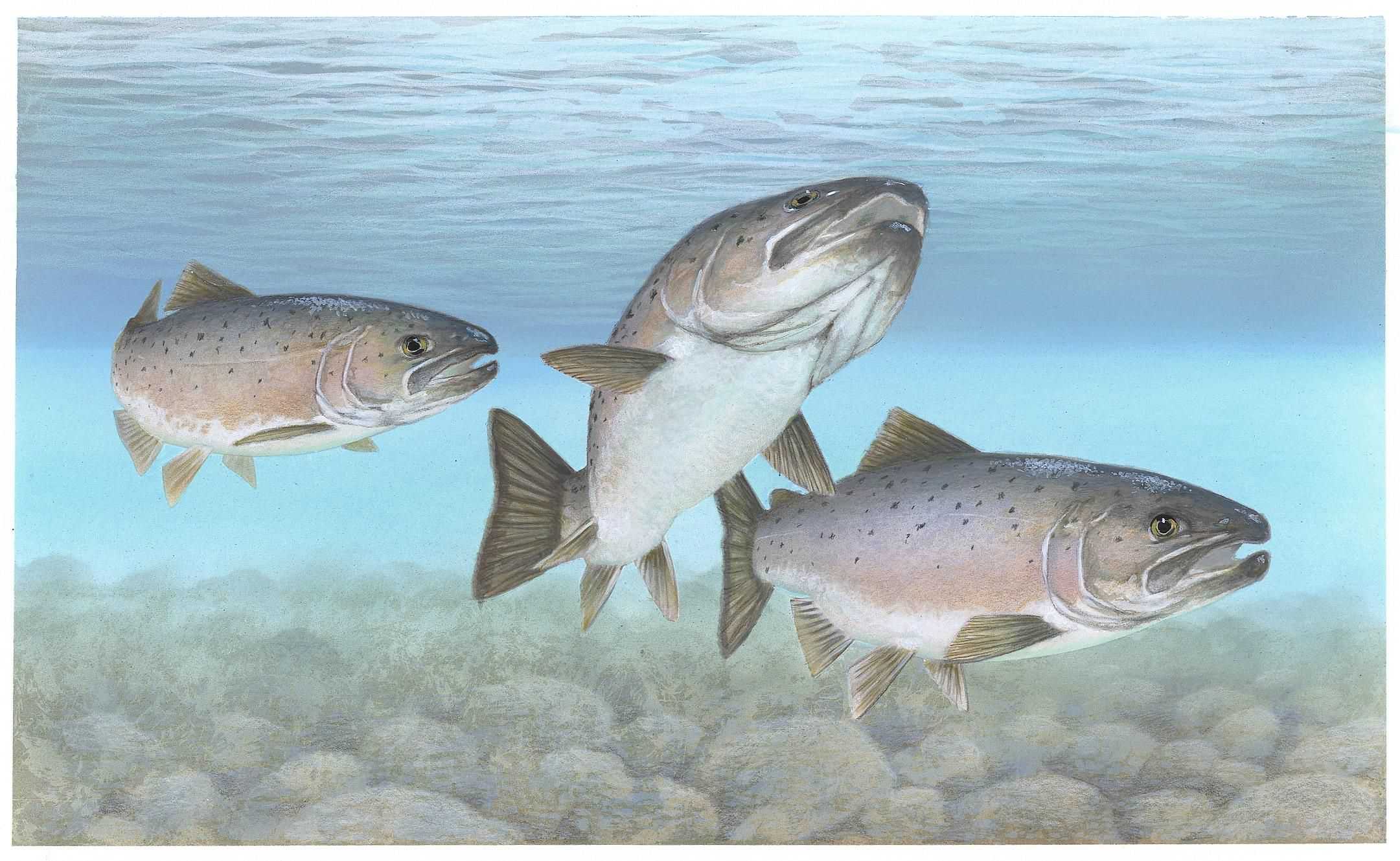
The Atlantic salmon, also known as Salmo Salar in Latin, is the only type of salmon found in the Atlantic Ocean. This whiteish salmon with a darker back grows up to 28 to 30 inches long (71 to 76 cm) and weighs somewhere between 8 and 12 pounds (3.6 to 5.5 kg).
When in the wild, the Atlantic salmon eats all types of insects and crustaceans in the rivers it’s spawned in. Later in life, when it reaches the sea, the Salmo Salar switches to saltwater prey such as Atlantic herring, capelin, lanternfish, barracudina, sand lance, and whatever crustaceans it can find in the sea such as krill amphipods. Most Atlantic salmon sold today is raised commercially, however, and gets fed with pelleted food.
All 5 other types of salmon are native to the Pacific Ocean instead, which is why they can be found along the west coasts of the US and Canada, going all the way up to Alaska. This also means that most Atlantic or Salmo Salar salmon you’ll find on the market is raised in fish farms as those are very common in Northern Europe. Vice versa, most of the Pacific types of salmon are wild-caught with the main exception of those coming from Chilean fisheries.
2. Coho salmon
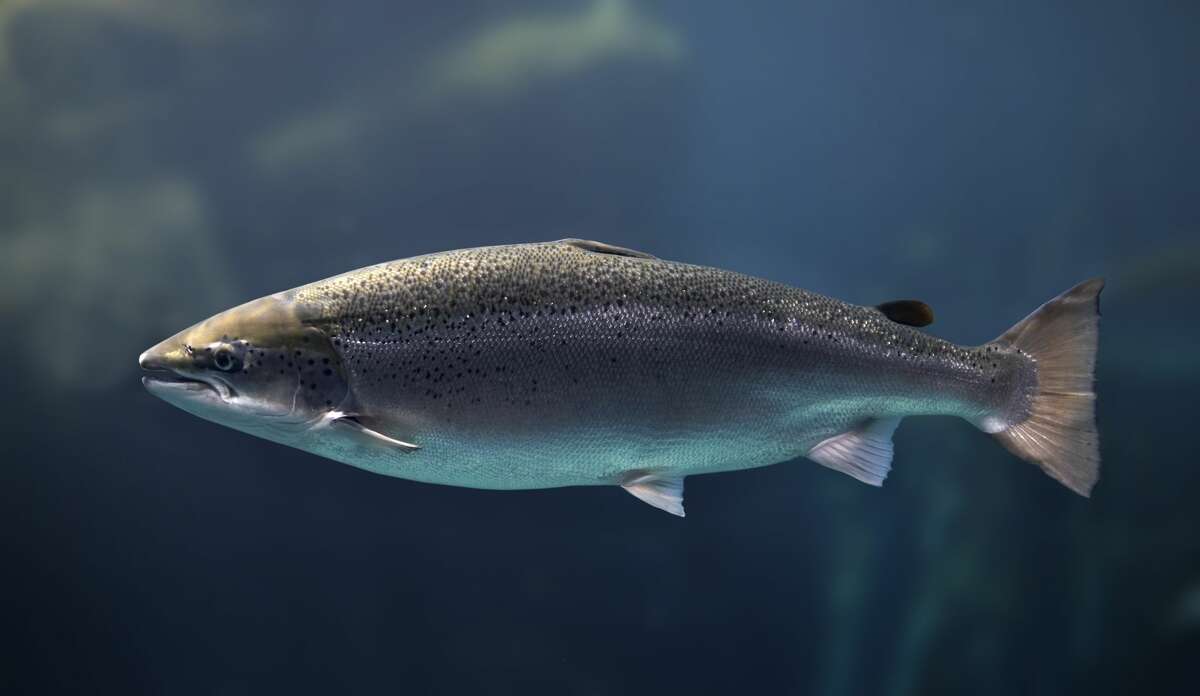
The Coho salmon or Oncorhynchus kisutch is also known as Silvery salmon or just “silvers” because of its bright silvery color. Underneath all that white, however, Cohos have a bright red flesh which makes for a striking sight when you cut one open. The Coho’s meat has an extra delicate texture compared to some other salmons which is how you can distinguish that salmon even if you haven’t seen it before it reaches your plate. In terms of taste, however, there isn’t much difference – it’s as delicious as the rest of them.
As for its own diet, the Coho eats mostly plankton and insects when it’s still adolescent and swims in fresh water. Once in the ocean, it switches to small fishes it can catch such as sand lance, anchovies, herring, sardines, and others. An adult Coho salmon is about 24 to 30 inches long (66 to 76 cm) and weighs between 8 and 12 pounds (3.6 to 5.5 kg) so it can’t eat much larger prey.
3. Pink salmon
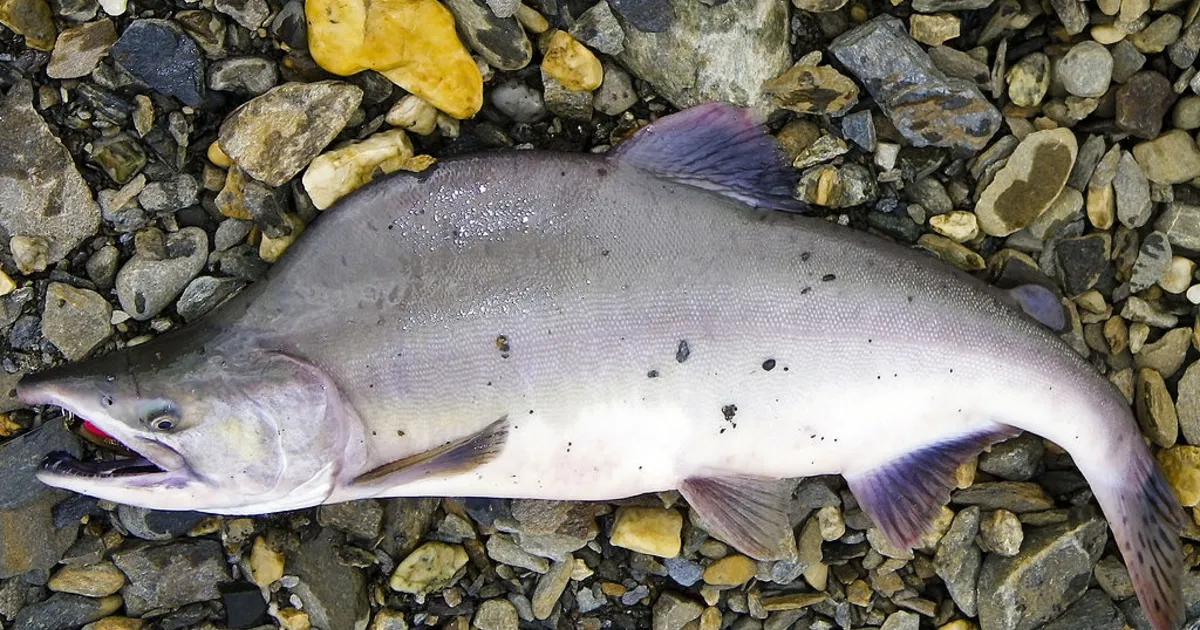
The next Pacific salmon to mention is Pink salmon, also referred to as Humpback salmon, the Humpies, or Oncorhynchus gorbusha in Latin. Very lightly colored but with darker heads and a hump, Humpies have very low-fat content but are quite flavorful. They are also extra small at just 20 to 25 inches in length (51 to 63.5 cm) and 3.5 to 5 pounds in weight (1.6 to 2.3 kg).
For their diet in the wild, they prefer to go after plankton, squids, tiny aquatic insects, and whatever small fish they can find. In fact, it’s the tiny seawater crustaceans they eat that give them their pink color.
4. Chinook salmon
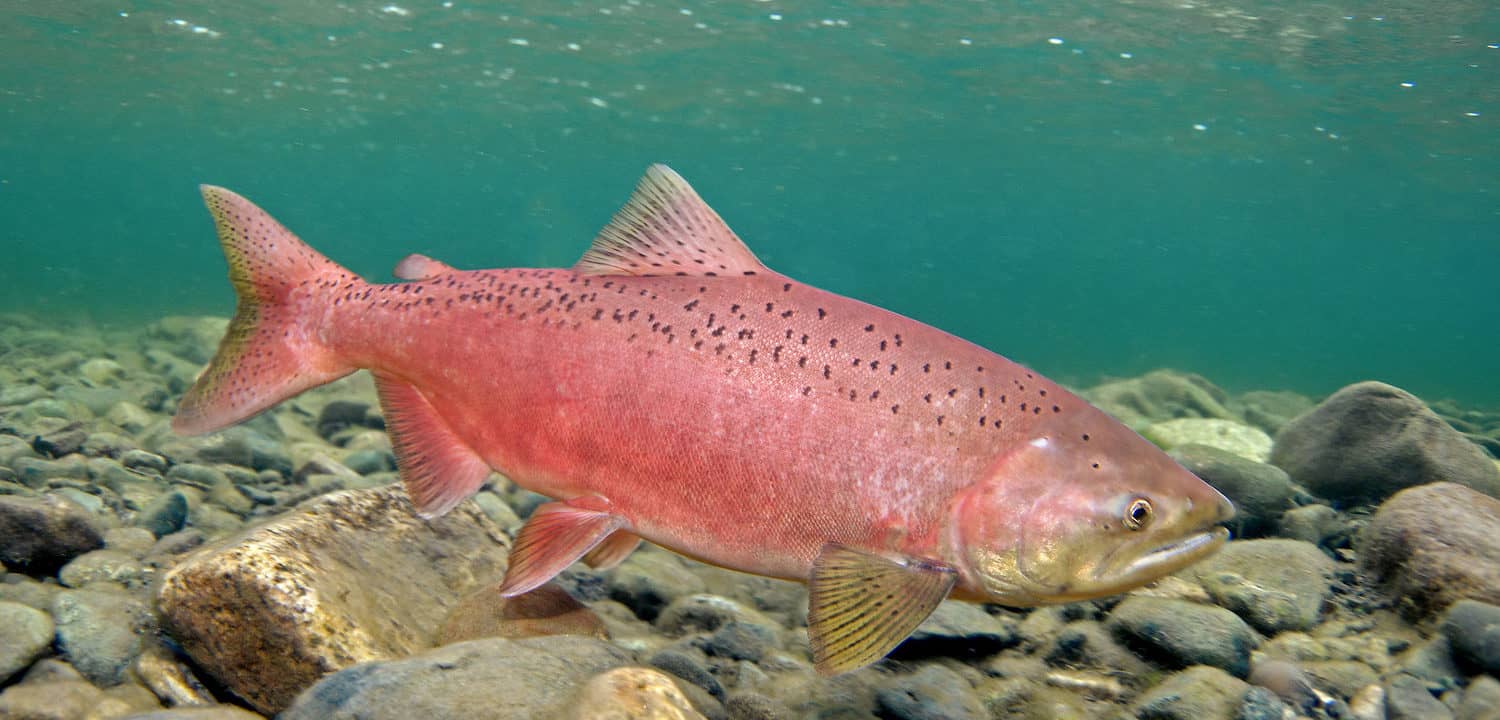
Also known as King Salmon or Oncorhynchus tschawytscha in Latin, Chinooks are the largest type of salmon out there. On average, a Chinook will get up to 36 inches (92 cm) although some have been found to be as long as 58 inches (147 cm). As for their weight, you can expect a Chinook to weigh up to and a bit over 30 pounds (14 kg).
It’s also considered to be the tastiest salmon by many although that is obviously subjective. What’s not subjective is that Chinooks have an extra high fat content and their rich flesh can range in color from anywhere between white and deep red.
As for their diet, a young King Salmon will usually feed on an arrangement of insects, both terrestrial and aquatic, any amphipods it can find, as well as other crustaceans. Once Chinooks grow into adults, they switch to a mostly fish-based diet, chasing any prey in the Pacific that’s smaller than them.
5. Chum salmon
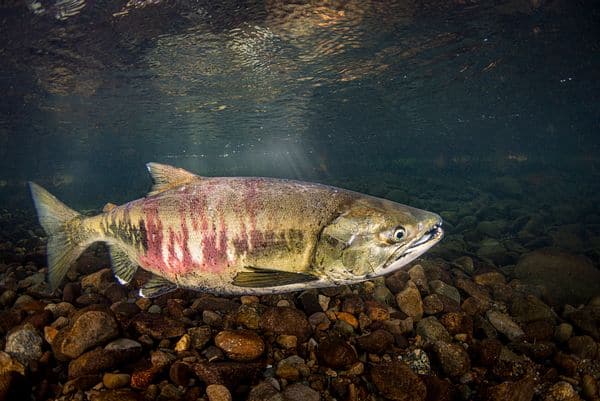
You’ll also see this type of salmon called Keta, Dog, or Silverbite salmon with its Latin name being Oncorhynchus keta. Not the largest but not the smallest salmon, the Chum is about 8 pounds (3.6 kg) heavy on average. It has a relatively pale flesh and less fat than most other salmon. It’s often sold frozen or canned.
For its own diet, the Chum prefers any terrestrial insects it can find growing up alongside plankton. Once an adult, it goes for copepods, mollusks, tunicates, and any fish small enough to be easily preyed upon.
6. Sockeye salmon
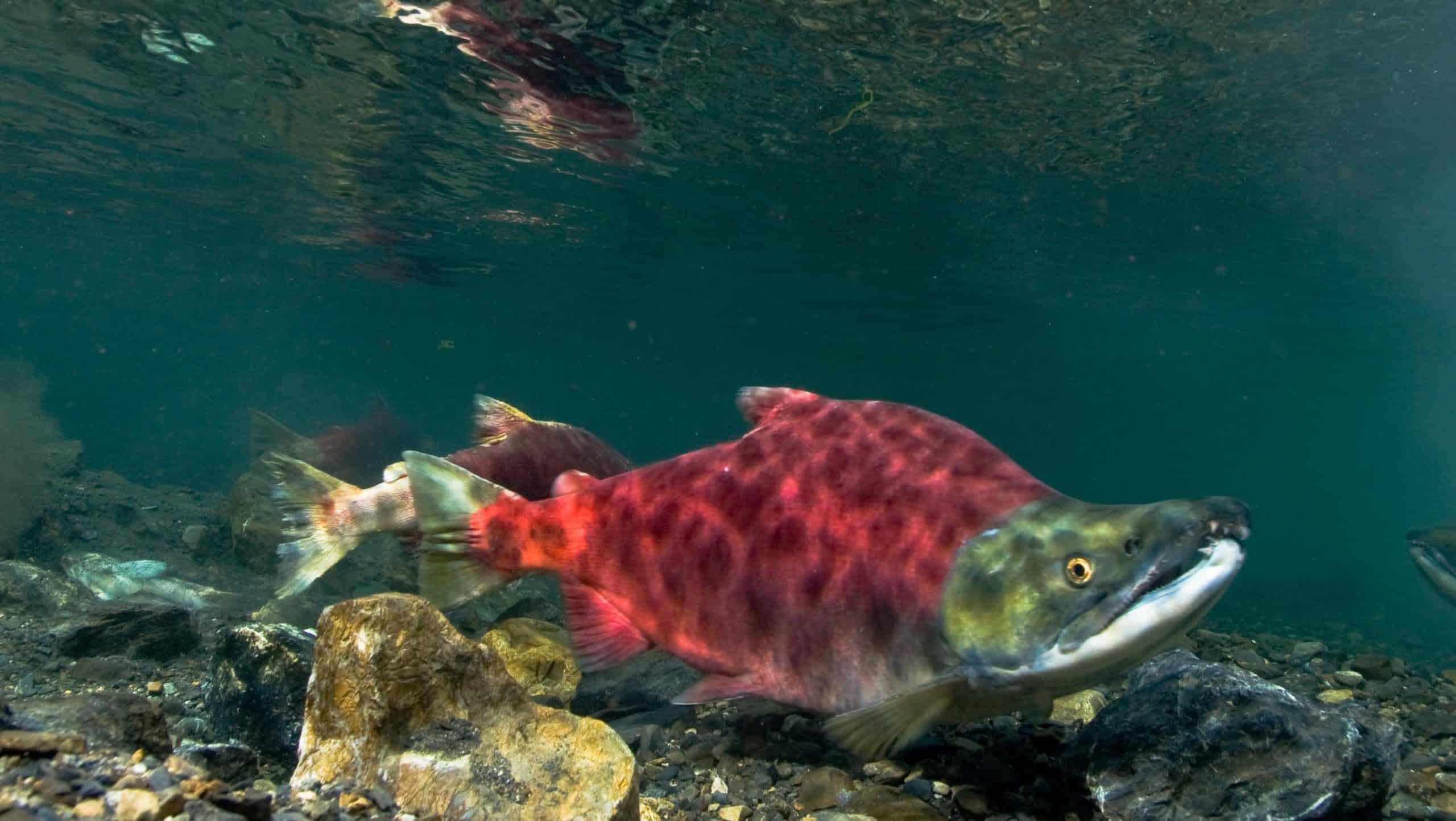
Last but not least, Sockeye salmon is also known as Red salmon or Oncorhynchus nerka. It has a striking red color which makes it very easy to distinguish from the other 5 salmon types and it grows up to 18 to 31 inches in length (46 to 79 cm) and 4 to 15 pounds in weight (1.8 to 7 kg).
The Sockeye prefers to eat insects, amphipods, and zooplankton in freshwater and continues to eat the same in saltwater with the addition of larval and tiny adult fish plus the occasional squid.
Can salmon be kept as pet fish?
Not really, at least not easily. There are two main reasons that make this near-impossible:
- Salmons have a life cycle that requires them to switch from fresh to salt water and then back to freshwater. This makes looking after them in a standard home aquarium much trickier. Looking after strictly freshwater fish from the Salmonidae family such as the Rainbow trout or the Steelhead, however, is more feasible.
- More importantly, salmon are large and active fish that require lots of space to thrive. The general rule of thumb for most pet fish is 1 gallon of water for every inch of length. Chinook salmon tend to get as long as 58 inches or 147 cm – that’s basically 5 feet! This would mean a 58-gallon tank but salmon need more space to swim freely if you want them to be healthy and happy. And that is the goal of keeping pets, after all. So, having a large enough home tank for an adult salmon is very impractical – not even most Koi ponds are big enough.
So, keeping a salmon as a pet is not really feasible. However, they are kept in captivity to grow them for food in a process called “aquaculture”. As you’ll see below, the first step of the salmon aquaculture process does involve hatching and keeping baby salmon in saltwater tanks at home. So, that is something you can theoretically try to do in a residential environment too. But you’ll still need a far greater saltwater space for an adult salmon.
What Do Salmon Eat in Captivity?
When salmon are kept out of their natural habitat, that’s typically done via fish farms. Because of the freshwater/saltwater life cycle of these fish, however, such salmon farms usually need to utilize two methods for housing the fish.
First, salmon are hatched from fertilized salmon eggs in indoor freshwater tanks. They are kept there until they become somewhere between 12 and 18 months old or until they are “smolts”, i.e. juveniles.
Once they are old enough, these smolts are transported in their tanks to large floating seawater net pens or sea cages in the middle of the ocean. There, they get fed pelleted food that has all the nutrients, vitamins, protein, and minerals they need to survive, grow, and stay healthy.
These adult salmon are kept in their wide sea pens for another 12 to 24 months until they are harvested. Most such sea cages are up to 100 feet wide and some 33 feet deep. Chile and Norway are the two largest countries in the world in terms of such “salmon aquaculture” with Norway producing 33% of the world’s farmed salmonids and Chile – 31%. Canada and Scotland are two other big producers.
In short, captive salmon are fed with an almost entirely artificial diet. It is healthy food, however, and it gives the fish everything they need to turn into healthy and nutritious adults themselves.
Why do salmon stop eating in freshwater?
This is actually a “partial myth” – many salmon do stop eating when they get back into freshwater but a lot of others don’t, at least not completely. There has been quite a bit of recent evidence, especially from Norway, that about 40% of salmon do continue to eat when in freshwater, albeit significantly less.
This has been discovered by looking at the stomach contents of caught salmon which often contain freshwater prey such as caddisflies and various other insects found in freshwater areas.
Still, it is true that salmon start eating significantly less food when they return to freshwater, and most even stop eating altogether. It’s not 100% clear why they do this but it is believed to be a matter of instinct. When salmon return to their freshwater place of origin, they do so to spawn their own eggs and then die.
This instinct for procreation is very strong in all animals and is understandably distracting from other needs and instincts such as hunger. Most other animals pay less attention to food when they are in heat too, they just have shorter journeys to make than salmon.
Conclusion
Salmon are a widely varying type of fish with a rich diet, lots of different habitats, and a truly extraordinary way of life. Unfortunately, all that makes them as fascinating as they are difficult to keep as pets. They can still be cultivated, however, hence why salmon meat is readily available in stores and restaurants in many places around the world.
